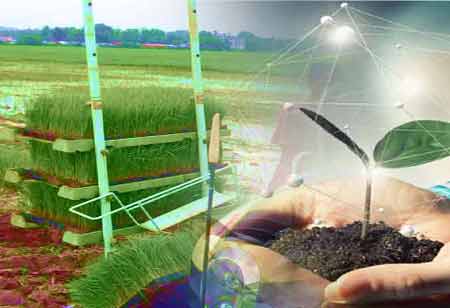Thank you for Subscribing to Agri Business Review Weekly Brief
Different Types Of Aquaculture With Its Advantages.
Aquaculture is the procedure of breeding, rearing, and harvesting aquatic creatures, along with fish, shellfish, algae, and other aquatic organisms, in all water atmospheres.

By
Agri Business Review | Wednesday, November 02, 2022
Stay ahead of the industry with exclusive feature stories on the top companies, expert insights and the latest news delivered straight to your inbox. Subscribe today.
Aquaculture is an appearing industry for fish firming and conserving biodiversity. The market will develop and create different opportunities shortly.
FREMONT, CA: Aquaculture is the procedure of breeding, rearing, and harvesting aquatic creatures, along with fish, shellfish, algae, and other aquatic organisms, in all water atmospheres.
With the growing demand for sumptuous seafood delicacies worldwide and technological advances, growing food in coastal marine waters and the open ocean has become possible.
To be more precise, aquaculture is the skillful procedure of nurturing aquatic organisms for human intake. It goes in the same line as agriculture if we replace plants or livestock with fish.
Fish farming is another term referring to aquaculture. Aquaculture can be conducted anywhere from coastal ocean waters to freshwater ponds and rivers to tanks on the land.
Different Types of Aquaculture
1. Mariculture
Mariculture requires seawater. This aquaculture is performed either by the ocean, a segmented part of the ocean, or in ponds comprising seawater. Molluscs, shellfish, prawns, and seaweed are marine organisms usually bred in such parts of the oceans.
Another fine fragment of mariculture is seaweed. These seaweeds and species are used in the cosmetics and jewelry manufacturing industries. For example, some facial creams utilize collagen from seaweed, whereas pearls are selected from mollusks and turned into stunning fashion accessories.
2. Fish Farming
Of course, fish farming is the basic type of aquaculture. The process incorporates the careful breeding of fish. It can be performed in any freshwater, preferably seawater. This method of breeding supports creating a source for food and consumption.
Comparatively easier, fish farming only needs proper water conditions and temperatures. There is no need for a greater space for this kind of farming as the breeding species, like tilapia, are too small.
3. Algaculture
Algaculture involves the farming of algae. As everybody knows, algae are microbial organisms resembling animal and plant characteristics. For economic vitality, they are harvested in huge numbers. Algae are utilized for various purposes.
4. Open-net pen and Cage Systems
Open-net pen and Cage systems are other types of aquaculture that are implanted offshore and in freshwater lakes.
Initially, net cages of between 6 and 60 pens are inserted in the water with the fish inside them. As a result, water environments become purified from chemicals, wastes, and parasites with high absorption of fish in the pens. However, the fishes in the net cages also attract predacious animals and bigger fish, which get trapped in the nets.
Advantages of Aquaculture
Studies proved that aquaculture had brought immense positive impact on the global food production industry. Some of the advantages of aquaculture are mentioned below:
1. Aquaculture is a Rich source of micronutrients and animal protein
Aquaculture or fish farming is considered a great source of protein. Fish fulfills today's necessity of animal protein for more than 1 billion people globally with poor resources, which is a product of aquaculture.
Micronutrients found in fish are also important for children's proper cognitive and physical development. Thus, aquaculture helps in the overall development of people worldwide.
2. It conserves the aquatic population.
Aquaculture helps preserve the population of wild marine plants and other organisms by avoiding the extinction of such species due to unrestrained mistreatment.
3. A Nurturer of biodiversity and ecosystem
It is another great benefit of aquaculture. Aquaculture techniques have resulted in the discovery of ways diverse aquatic organisms and plants can coexist naturally. Thus, aquaculture helps decrease environmental waste and augment the ecosystem's proper functioning.
4. Employment Opportunities
Aquaculture also brings various career opportunities. As an emerging career field, aqua farming will create ample job opportunities.





